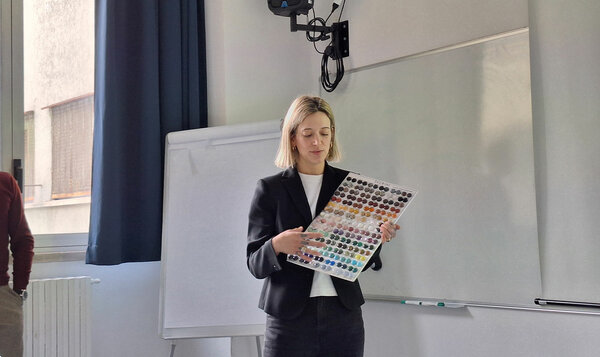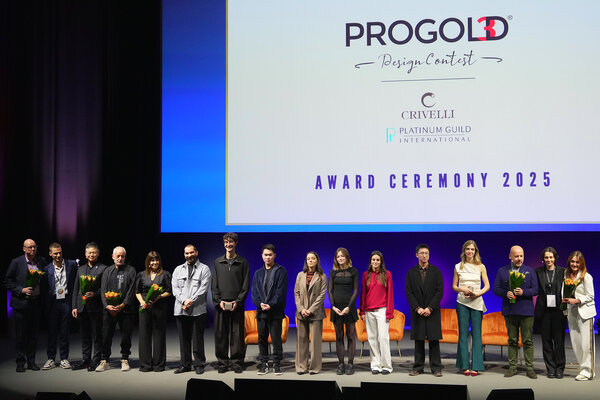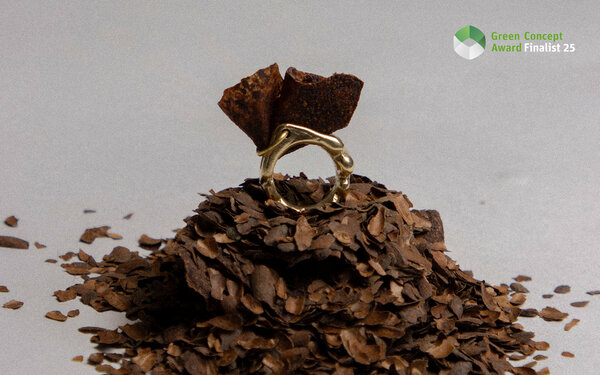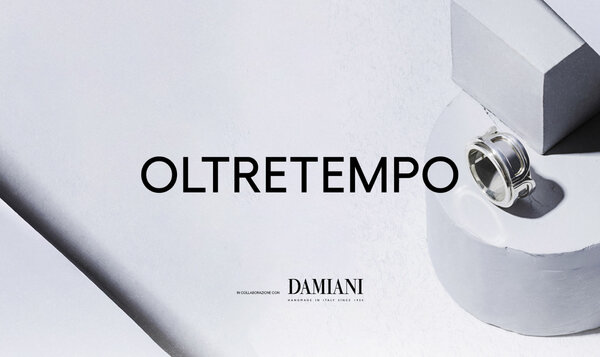The world of jewellery is undergoing a radical transformation. Today these accessories are no longer simply ornaments, but expressions of art that fuse fashion and innovation.

The evolution of jewellery: amidst art, fashion and technology
Date
02 September 2024
New trends and technological advances are redefining the very concept of jewellery, opening up new frontiers in the field of artistic expression and personal fashion.
Jewellery trends for 2024
The jewellery trends for 2024 have proven to be bold and in some respects unconventional with geometric shapes continuing to dominate the scene and Designers experimenting with increasingly sharp angles and clean lines to create pieces with a strong visual impact.
Unusual materials are gaining popularity, and the use of elements such as glass, ceramics and recycled materials in high jewellery collections is becoming more widespread. Bright colours are also creeping into the exclusive jewellery niche, with gemstones and enamels adding touches of electric blue, emerald green and vibrant orange to contemporary designs.
While luxury jewellery is now embracing a more minimalist and innovative aesthetic, a trend towards oversized and statement pieces is evident in the costume jewellery sector, with earrings and necklaces becoming authentic focal points of an outfit.
Jewellery as works of art
The line between jewellery and contemporary art is becoming increasingly blurred, so much so that artists and designers are collaborating, redefining the limits of creativity and turning jewellery into real wearable works of art. These unique pieces tell stories, evoke emotions and challenge the traditional protocols of fine jewellery.
A prime example of this trend is the work of Wallace Chan, a visual artist who creates wearable miniature sculptures using innovative techniques and avant-garde materials. His exclusive creations, which often take years to complete, are considered true masterpieces of engineering and art and are often exhibited and preserved in art galleries.
Maison Van Cleef & Arpels also continues to amaze with its collections inspired by nature and poetry, creating pieces that constitute true visual stories. Their famous “Zip” collection is celebrated for turning a functional element into a wearable work of art, challenging conventional perceptions of what a piece of jewellery can be.
Technology and innovation in jewellery design
The advent of new technologies is dramatically revolutionising the way jewellery is designed and produced. One classic example is 3D printing which has opened up new creative possibilities, enabling the creation of complex and detailed shapes that would be difficult or impossible to achieve with traditional techniques. Designers are exploiting this technology to create jewellery with organic and intricate structures, inspired by natural forms such as corals and cells.
Augmented reality (AR) is redefining the jewellery shopping experience, allowing customers to virtually “try on” pieces before purchase. Brands such as Tiffany & Co. have rolled out AR apps that allow users to visualise how the jewellery will look on their hands or wrists.
Companies such as Ringly are producing smart rings and bracelets that, thanks to the integration of wearable technology, can track physical activity and notify the user of incoming calls, playing not only an aesthetic but also a practical role.
Sustainability and ethical responsibility
Heightened environmental and social awareness is profoundly influencing the jewellery industry and an increasing number of consumers are demanding transparency on material sourcing and manufacturing practices, pushing brands towards greater sustainability and ethical responsibility.
Brands like Pandora have pledged to use only recycled gold and silver by 2025, significantly reducing the environmental impact of their production. While the use of lab-grown diamonds is gaining popularity as a sustainable alternative to mined diamonds.
Designers like Pippa Small are working with artisan communities in the global South, promoting fair trade and preserving traditional techniques to create beautiful pieces while respecting people and the environment.
Moreover, many brands are leading the industry towards more transparent practices, offering customers detailed information on the provenance of every gem and metal used in their jewellery. This shows how the entire high jewellery sector is evolving towards a more responsible and transparent business model, where ethics and sustainability form an integral part of the value and appeal of jewellery.
Future prospects
The evolution of contemporary jewellery today represents an interweaving of art, fashion and technology. From avant-garde designs that challenge traditional conventions, to the innovative use of new technologies and materials, the world of jewellery is undergoing an unprecedented creative renaissance.
At the same time, the industry is embracing ethical responsibility and sustainability, demonstrating that it is possible to create extraordinary pieces while respecting the environment and individual communities. This evolution not only enhances the fashion and design landscape, but also offers consumers the opportunity to express their individuality through unique and meaningful pieces.
For those who wish to explore this fascinating evolving world and become a professional in this field, IED offers specialised courses in jewellery design. From Bachelor's Degrees and Master's Programs to Summer Courses, IED provides the skills needed to navigate emerging trends, master new technologies and develop a sensitivity towards sustainable and responsible practices.








